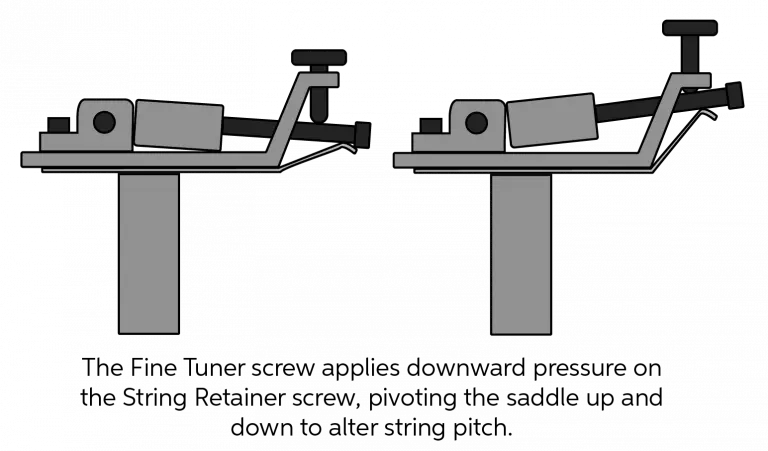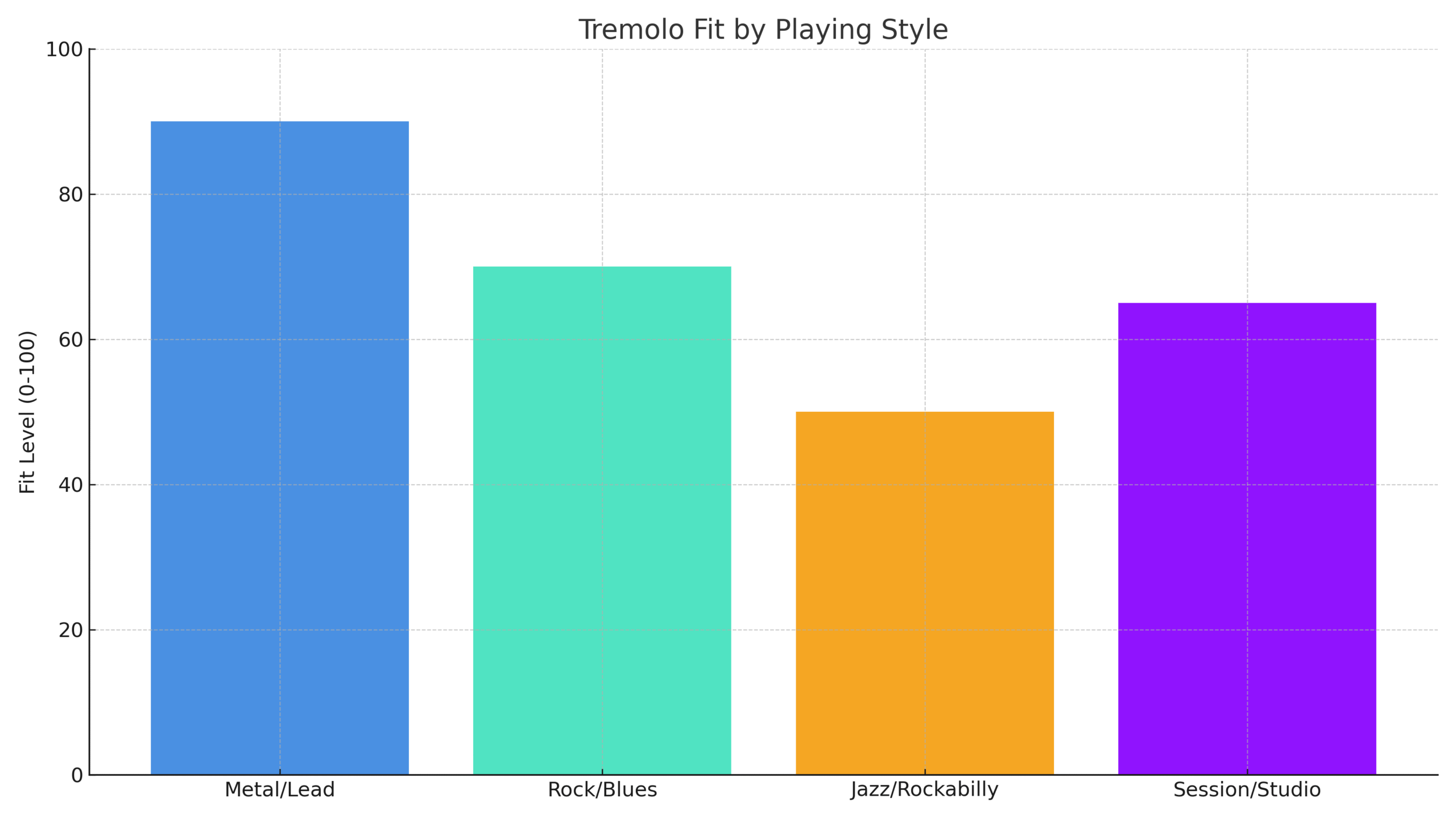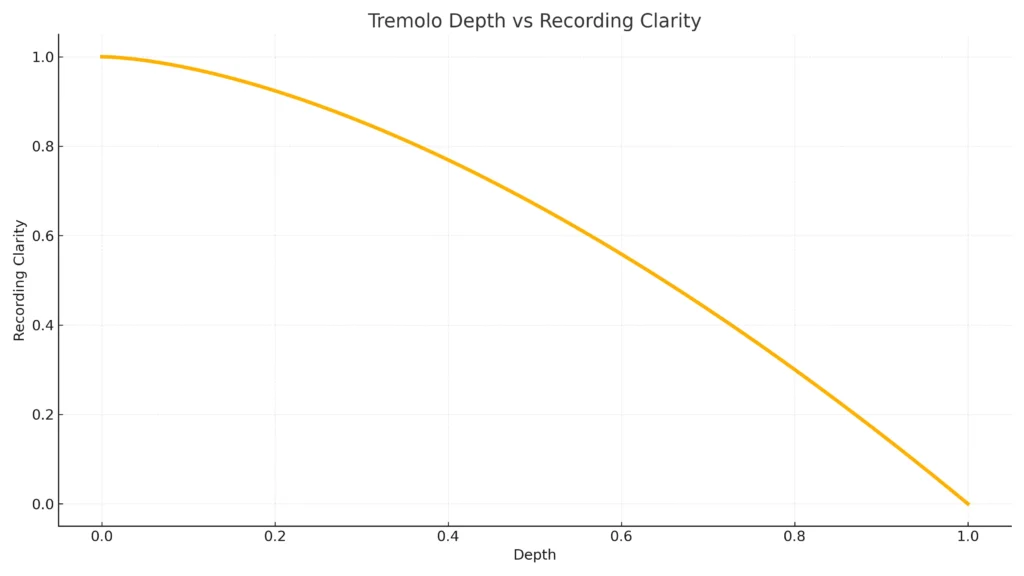Picking a tremolo system isn’t just about adding flair to your playing. It’s about finding a tool that feels right under your hands and sounds right in your recordings. If you’ve already moved past the basics, you probably know that the wrong choice can cause more headaches than inspiration.
The good news is, once you understand how pedals and bridges differ, you’ll know where your money is best spent. In my experience, the right system becomes almost invisible, letting you focus on playing instead of fighting with tuning or tone.
Key Takeaways
- Tremolo shapes tone, sustain, and recording performance.
- Pedals are easy to swap, while bridges alter the instrument itself.
- Playing style and genre often determine the best system.
- Recording reveals weak spots that live playing can hide.
- Small adjustments keep even complex systems reliable.
Why Tremolo Systems Feel Different
A tremolo isn’t just a sound effect, it changes how your guitar responds to your touch. Pedal-based tremolos add rhythmic pulses and textures without altering your guitar’s mechanics. Bridge systems, like a Floyd Rose or a Fender synchronized tremolo, change how the strings behave under your fingers.

That’s why two players can use the same amp settings but sound completely different if their guitars have different systems. Have you ever switched between guitars and noticed how one feels tighter or looser even with the same rig? That’s the tremolo system at work.
Pedal-Based Tremolo Systems You Can Rely On
For guitarists who want tremolo effects without modifying their instrument, a tremolo pedal is the most flexible option. Pedals are the simplest way to bring tremolo into your setup. They don’t require modifications, and you can place them anywhere in the chain.

Plenty of players start with something basic. I’ve seen the Boss TR-2 on countless boards because it just works. It doesn’t distract you with options, which is perfect if you’re focusing more on rhythm tightness or practicing phrasing.
If you’re chasing a polished, studio-ready sound, the Strymon Flint goes a step further. It combines tremolo with reverb and even supports MIDI, which is handy if you use a more complex rig.
For players who prefer vintage warmth, Supro tremolos are worth trying. They remind me of plugging into an old tube amp, with that slightly gritty pulse that sits well in blues or indie recordings.
What matters with pedals isn’t just the brand. Placement in your signal chain makes or breaks the effect. Most players find tremolo works best after overdrive and before delay or reverb. To get the most from pedals, don’t forget the value of the right audio accessories like clean power supplies and solid cables.
Built-In Tremolo Bridges for Hands-On Control
Bridges give you direct control that pedals can’t. Pulling on a whammy bar bends strings, springs, and hardware together, making pitch shifts part of your playing style rather than an add-on effect.

For aggressive techniques, a Floyd Rose bridge holds tuning even under extreme bends. That’s why so many metal players rely on it for dive bombs.
The Fender synchronized tremolo has a different personality. It’s lighter, more subtle, and fits styles like surf, blues, and classic rock. Many Strat players tweak the block or saddles to squeeze out extra sustain and tuning stability.
Then there’s the Bigsby vibrato. It’s smoother, slower, and more expressive. Jazz and rockabilly players love it because it adds character without overpowering the chords. It does take patience when restringing, but the feeling is worth it.
No matter which bridge you choose, setup matters more than the logo. When I first added a floating bridge to a Strat, I didn’t balance the springs correctly, and it threw the guitar out of tune constantly. The fix wasn’t buying a different brand. It was learning to set it up properly.
Recording and Tone in Practice
For example, if you’re looking into how to record metal guitars, understanding the right tremolo system and how it impacts your tone can be crucial for capturing the heavy, dynamic sound that defines the genre.

In the studio, tremolo behaves differently than it does live. A floating bridge can sound exciting on stage but may blur rhythm parts under a mic. Locking systems reduce that risk but take longer to set up. I’ve worked with engineers who insisted on tuning checks before every take, just to be safe. Sound on Sound highlights the same point in their recording guides.
A few tricks help:
- Record a dry DI track along with your main signal. It gives you a backup if the tremolo-heavy take doesn’t sit well in the mix.
- Double-track tremolo and clean takes. Blending them later adds depth without muddying chords.
Dialing back depth also helps. A subtle pulse adds movement, while deep modulation can smother a mix.
If you like collaborating online, use apps to listen to music together. Hearing your tremolo alongside other instruments in real time shows whether it adds color or just clutter.
Creative and Boutique Gear Worth Exploring
Some players want more than the traditional options, and that’s where boutique tremolo pedals shine.
The Dreadbox Rainmaker, for example, doesn’t just pulse. It creates evolving, tempo-synced patterns that almost feel sequenced, which can inspire whole new riffs. The Electro-Harmonix Pulsar is another example. Instead of locking you into one shape, it lets you sweep from smooth waves to sharp chops.
What makes these pedals stand out isn’t just the names. It’s the freedom to sculpt tremolo into something personal. Writers at Humbucker Soup point out that advanced tremolo pedals let players stretch past traditional tones into new textures, which is why you see them in ambient and progressive music.
Matching Systems to Playing Styles
Every guitarist has different needs. This quick comparison shows which system fits where:
| Playing Style | Best System Choice | Why It Works |
| Lead Players (metal, shred) | Floyd Rose | Handles extreme bends and dive bombs without losing tuning stability. |
| Rhythm Players (rock, blues) | Fender synchronized tremolo or pedal | Keeps chords tight while adding subtle movement without pitch drift. |
| Session Musicians (studio work) | Tremolo pedal or hybrid rig | Easy to adjust between genres, ideal for recording situations. |
| Vintage & Expressive Styles (jazz, rockabilly) | Bigsby vibrato | Smooth, subtle modulation that adds character and feel. |
When I first set up a Floyd Rose, it took hours to fine-tune. Once it was dialed in, though, it felt rock solid. For players who don’t want that kind of commitment, pedals are often the easier option.
Common Tremolo Mistakes I See All the Time
Even seasoned players trip up. One mistake is putting a tremolo pedal before distortion. It usually muddies the effect. Moving it after gain and before reverb or delay almost always clears it up.
Another is skipping tuning checks before recording. A quick strobe tuner pass can save hours of frustration later.
I’ve also seen players switch to heavier strings without adjusting bridge springs, which makes the guitar unstable. And then there’s the urge to crank depth for an entire song. It feels exciting, but across a full mix it usually turns into noise. Subtlety works better.
How I Keep My Tremolo Working Day After Day
A tremolo system only performs as well as its setup. Stretch your strings before tuning, check intonation with a strobe tuner, and adjust bridge height until it feels balanced. After any big change, record a quick test take. It’s the fastest way to catch problems.
Maintaining tremolo reminds me of tuning a room for better acoustics. Just as adjusting the acoustic ambiance of a space prevents noise issues, small bridge tweaks stop bigger problems from building up. If you use a Bigsby, Gretsch offers solid advice for keeping it smooth.
Conclusion
Choosing a tremolo system isn’t about chasing trends. It’s about finding what makes your guitar feel right. Pedals are quick, affordable, and flexible. Bridges, on the other hand, become part of the guitar itself. Recording highlights both their strengths and flaws, so testing matters.
Don’t be afraid to experiment. The right system should make you want to pick up your guitar more often, not fight with it. That’s the real test of whether you’ve found the right fit.
FAQs
1) Can Tremolo Work in Heavy Metal Without Ruining Clarity?
Yes. Locking systems like Floyd Rose are built for stability under extreme use. I’ve worked with players who leaned hard on them night after night, and they stayed surprisingly solid.
2) Should I Use a Tremolo Pedal If My AMP Already Has Tremolo Built In?
A pedal usually gives you more control and flexibility than the built-in effect. I get this question a lot, and nine times out of ten, pedals win for versatility.
3) Is Bigsby Still Relevant Today?
Definitely. It may not suit aggressive genres, but in jazz or rockabilly circles it’s loved for its smooth feel. I’ve watched players add one to a hollow body just for that character.
4) Where Should I Place Tremolo In My Signal Chain?
Most players run it after gain pedals and before reverb or delay. That said, I’ve also thrown it at the very front just to hear what happens. Sometimes the “wrong” spot sparks a new idea.



